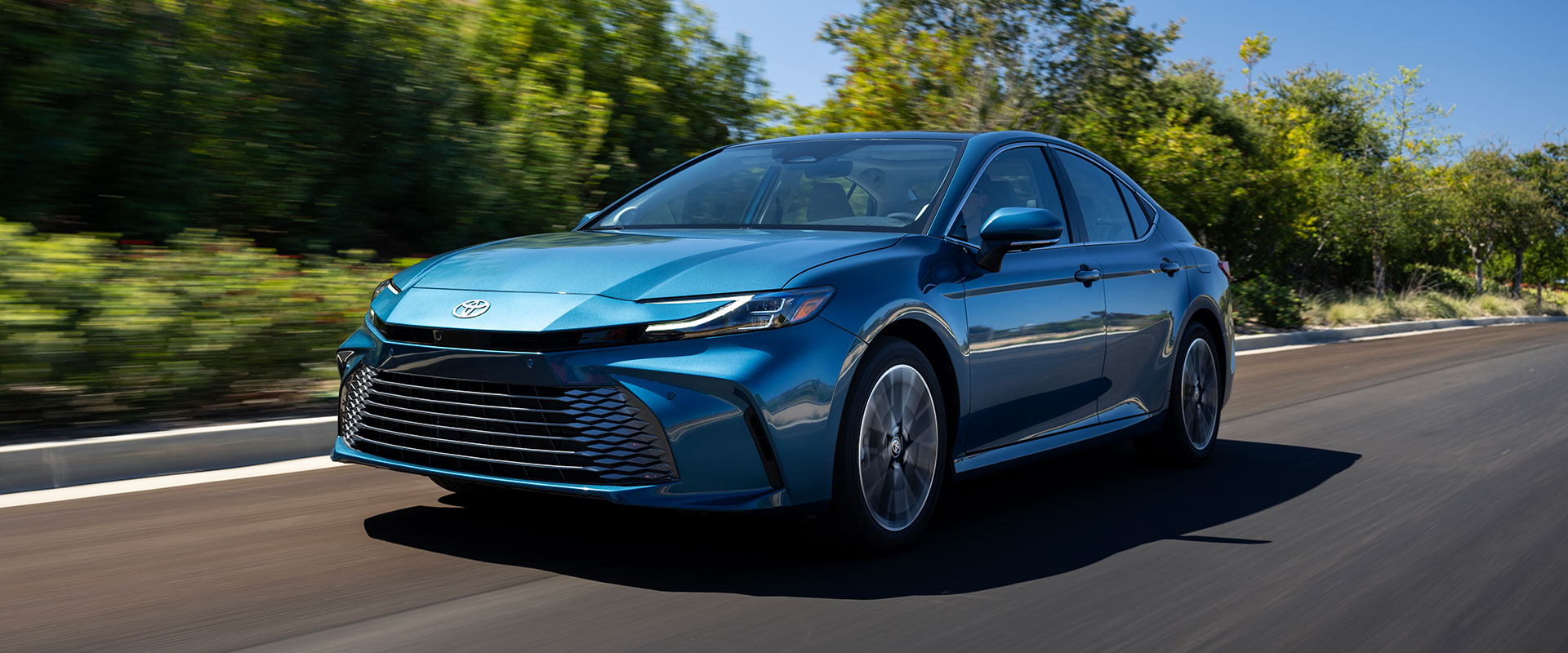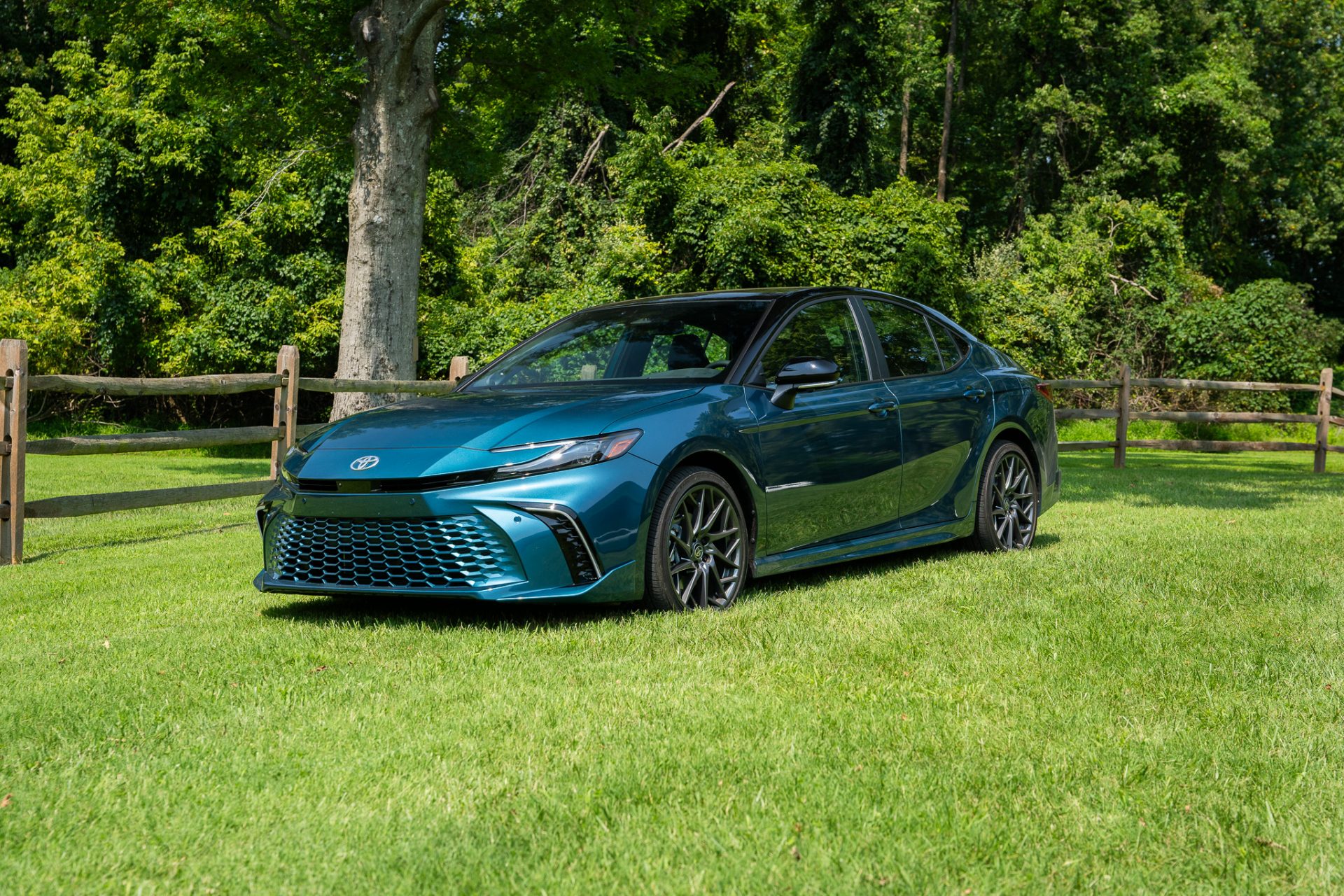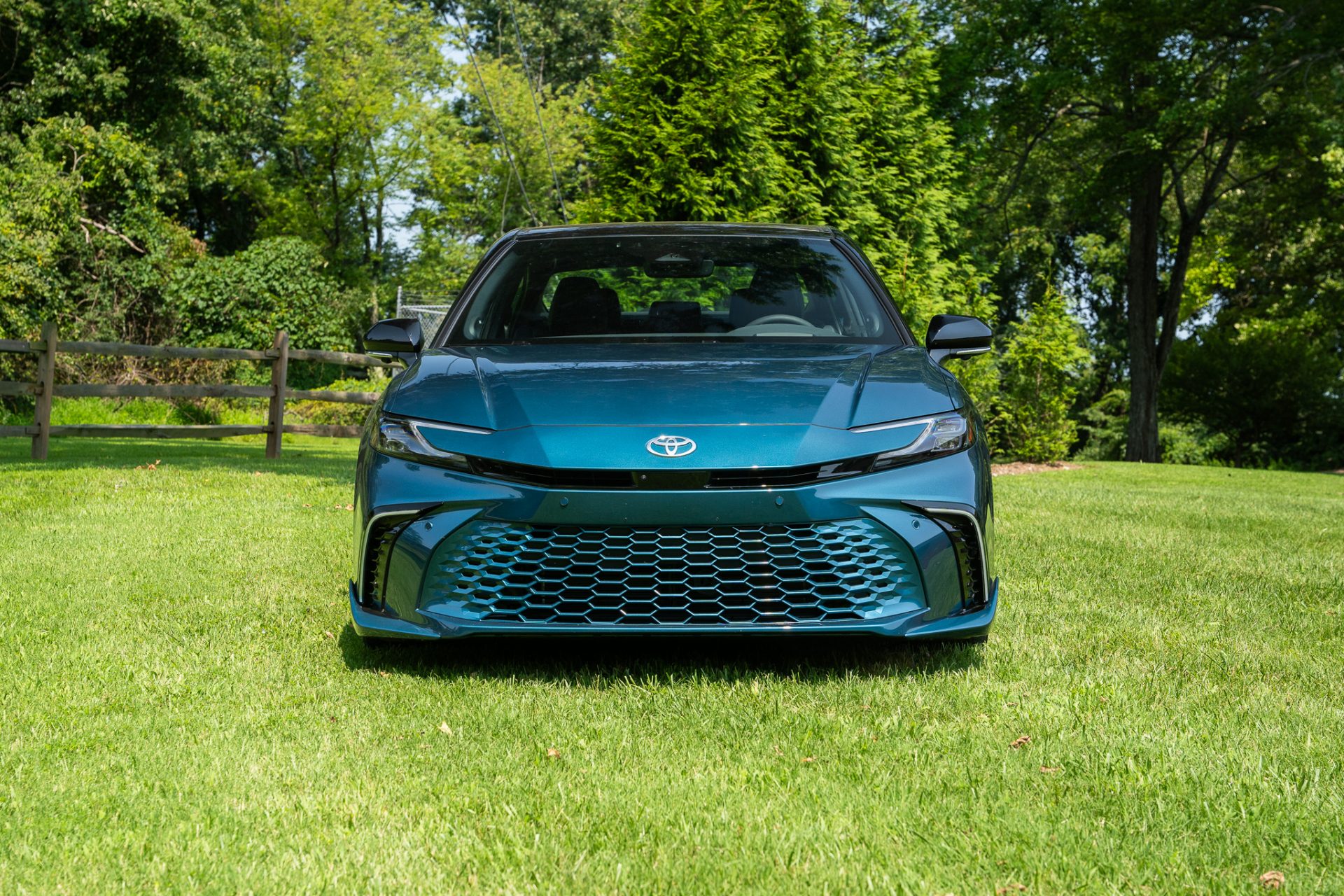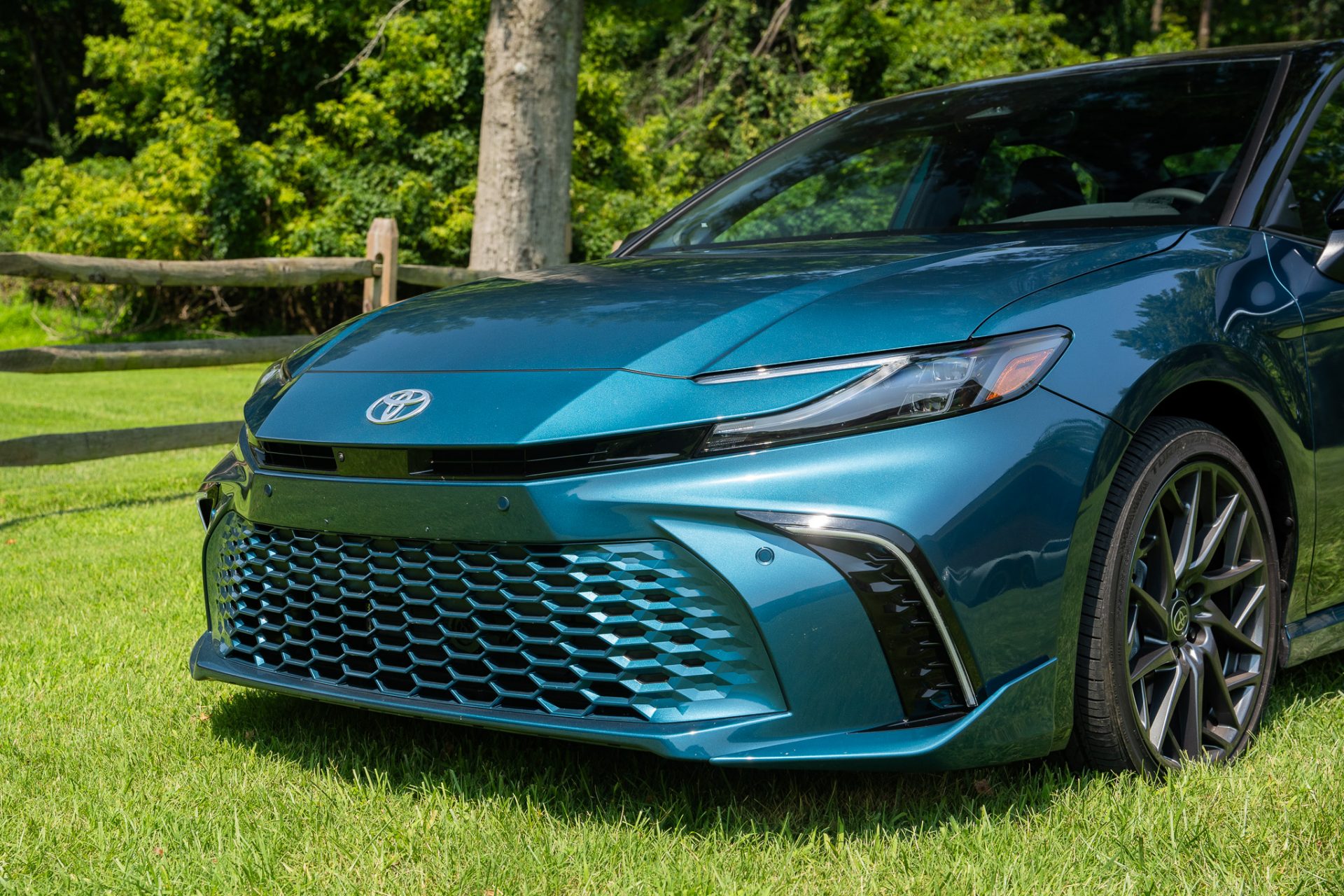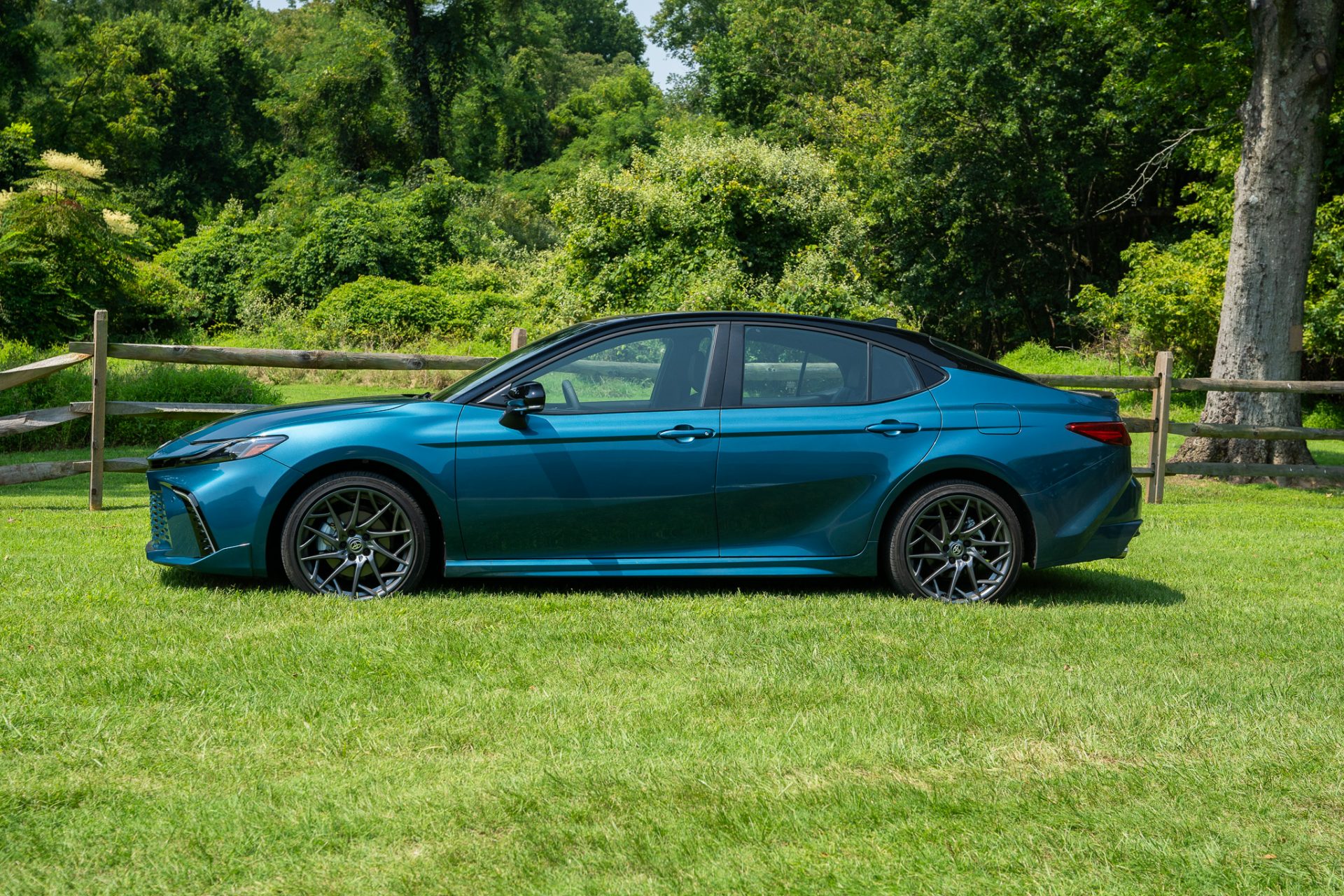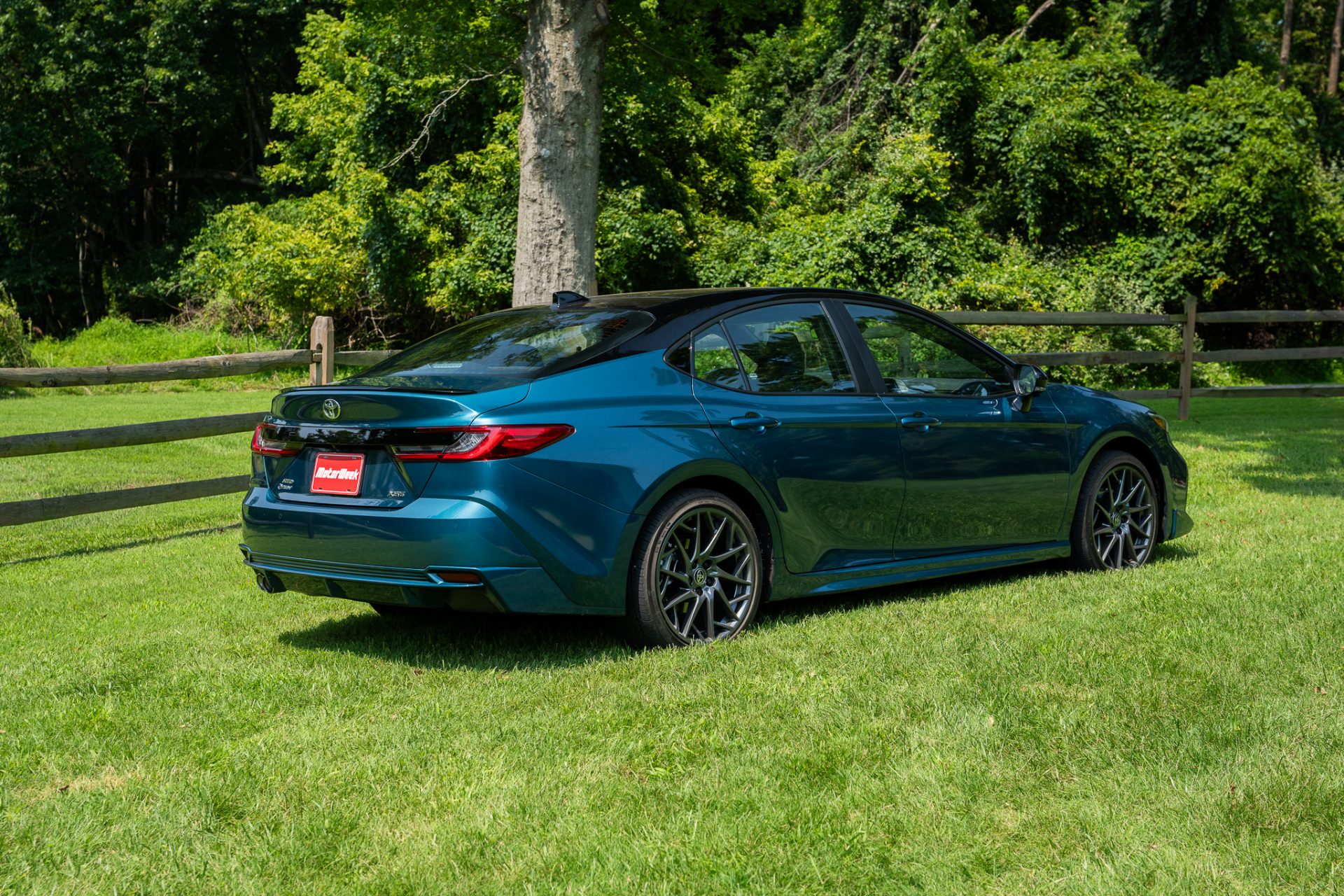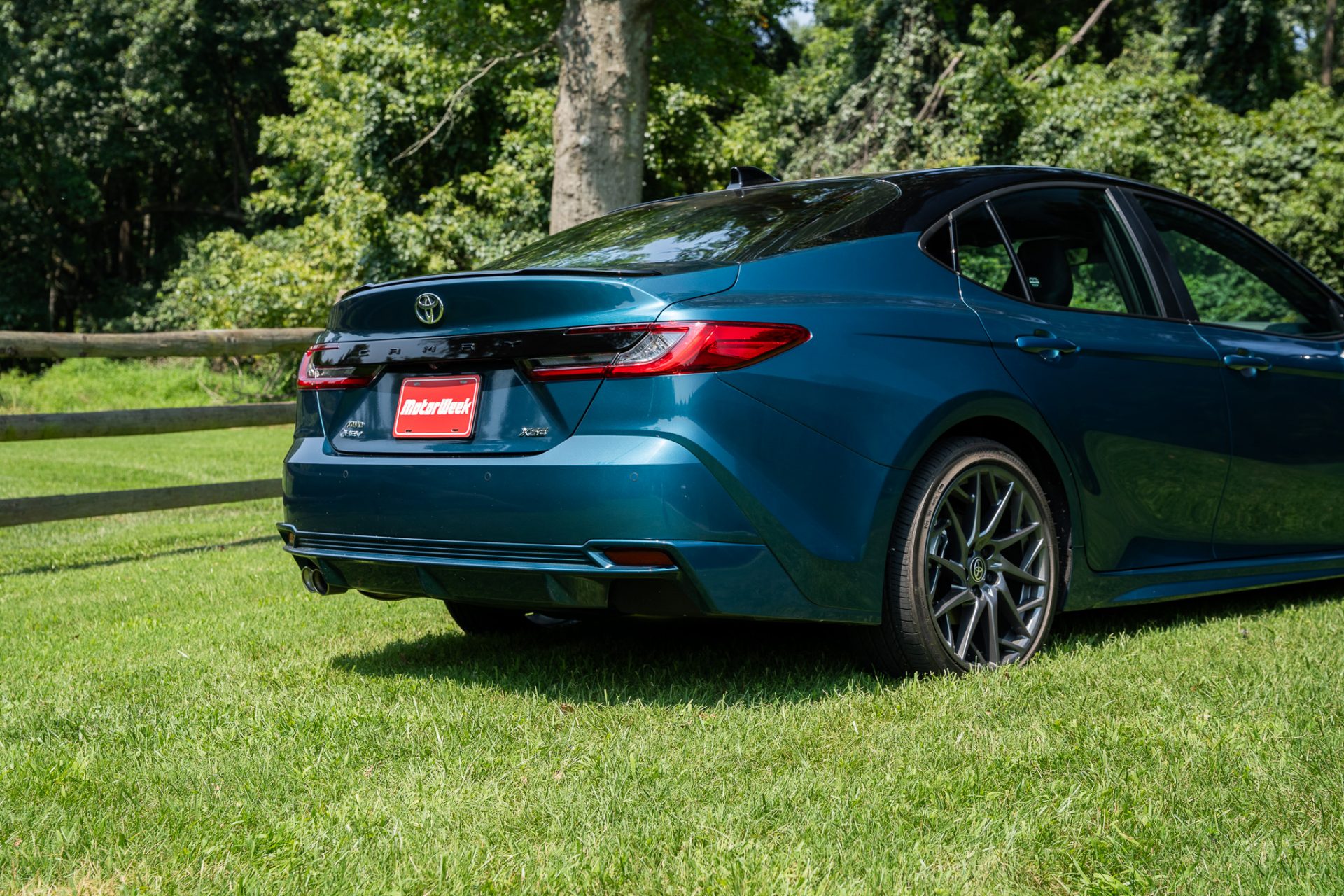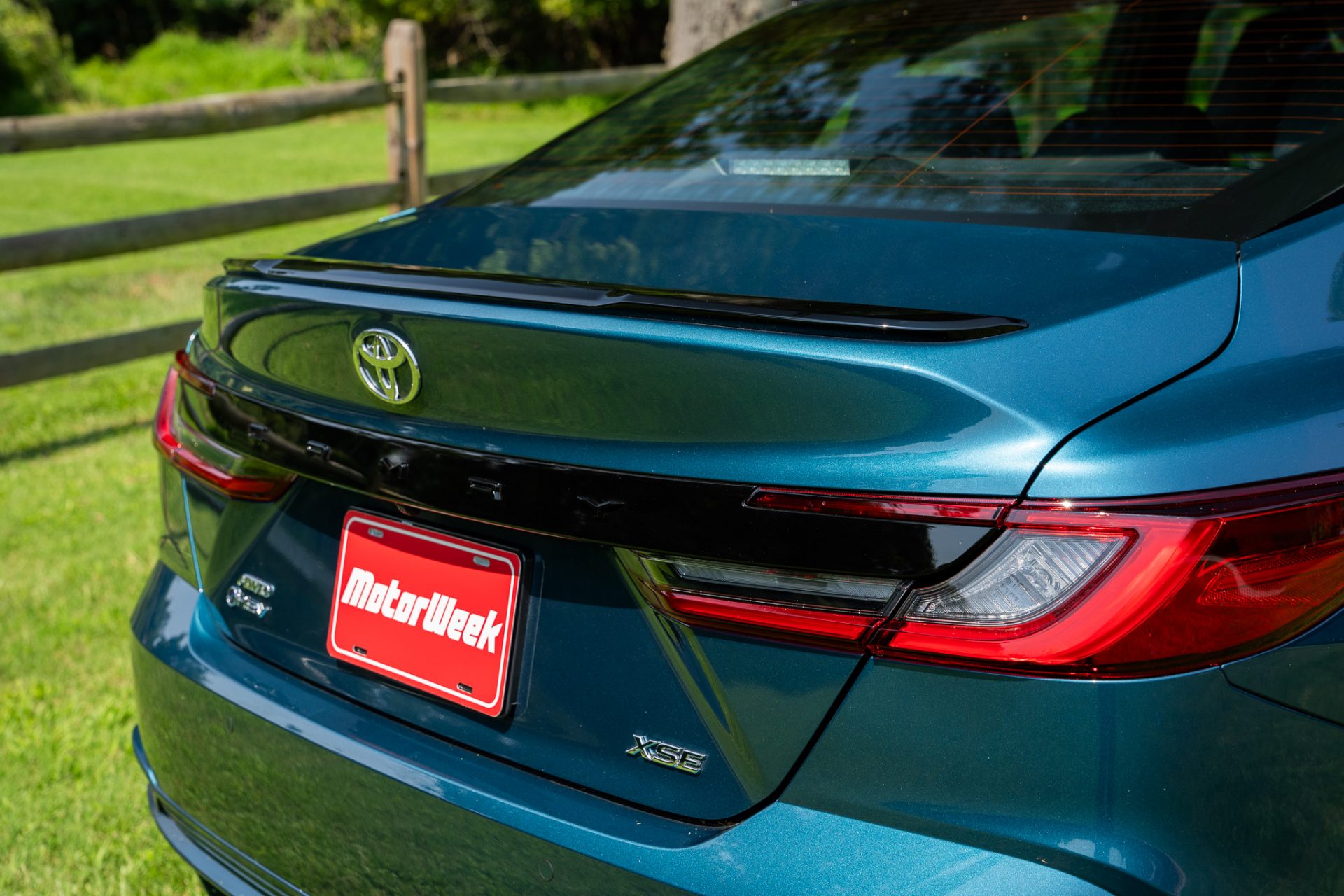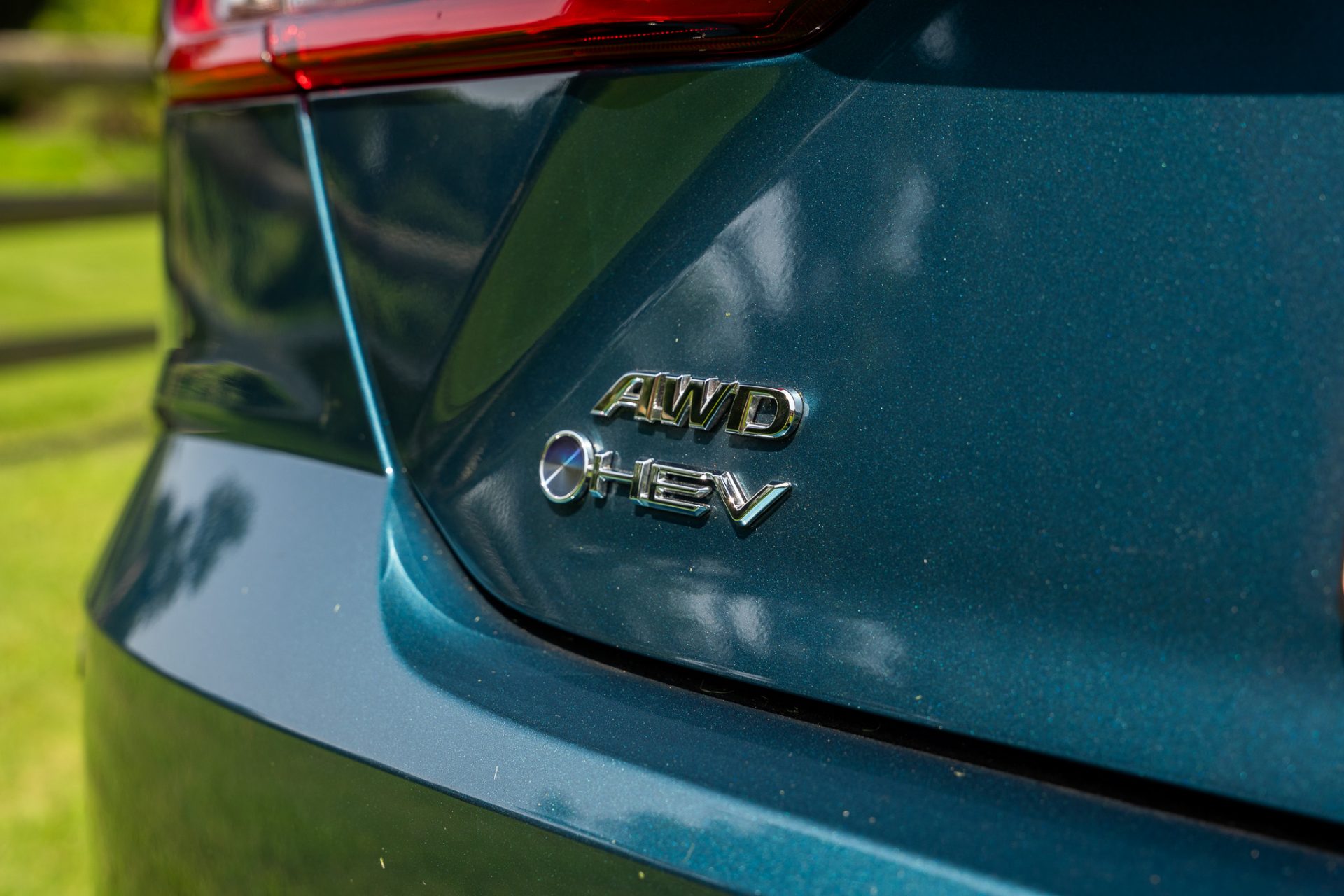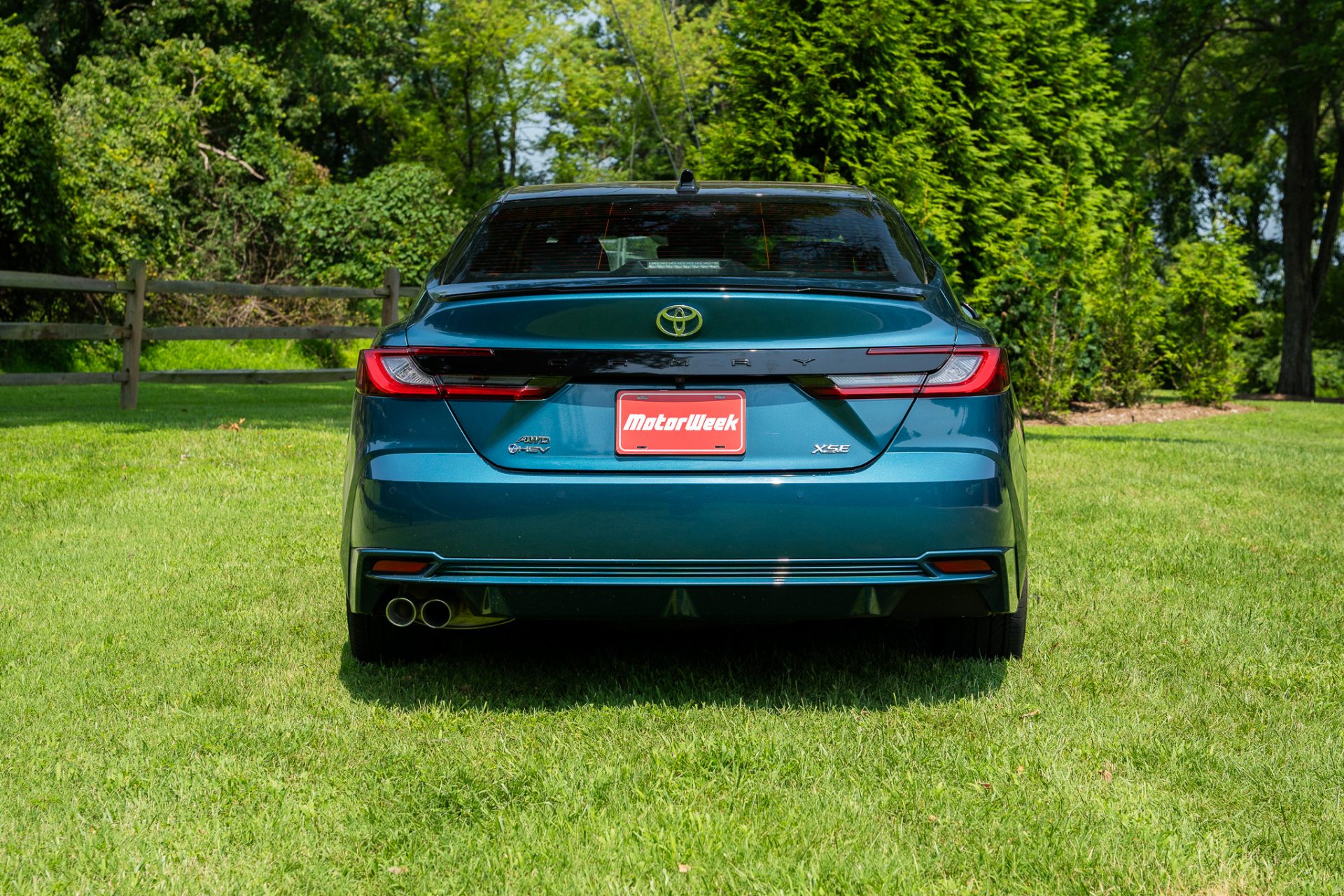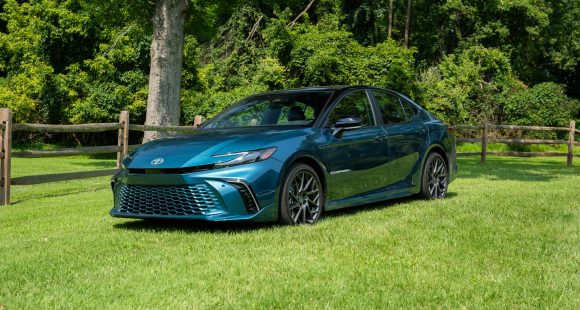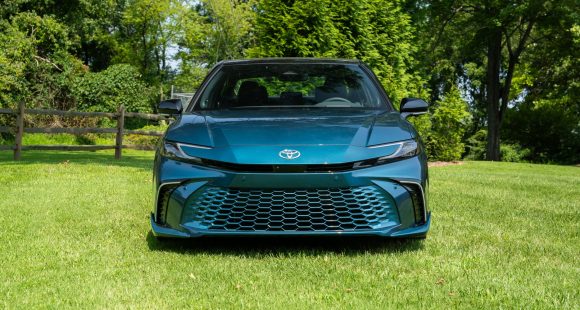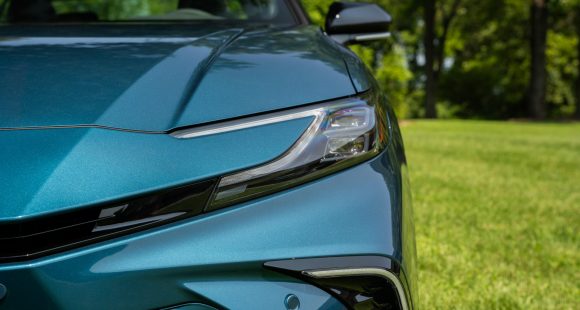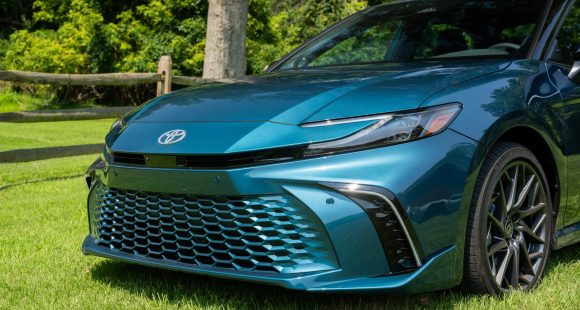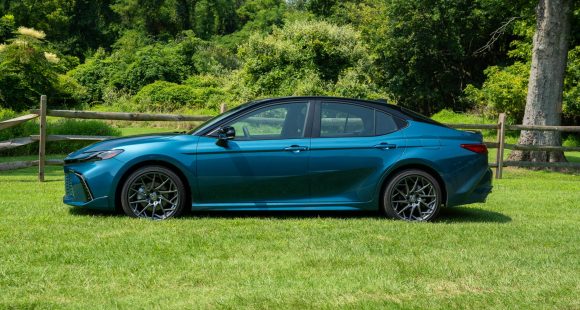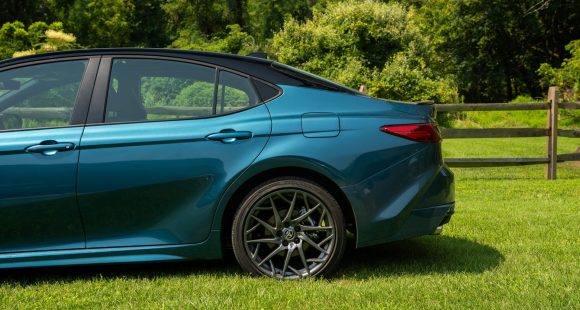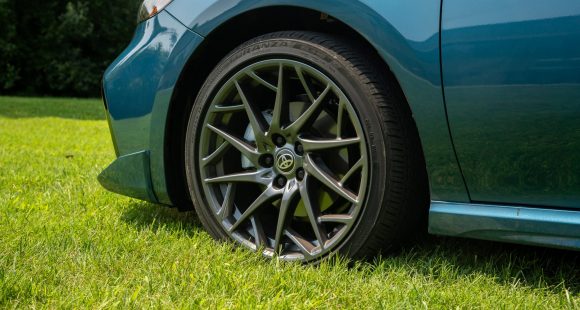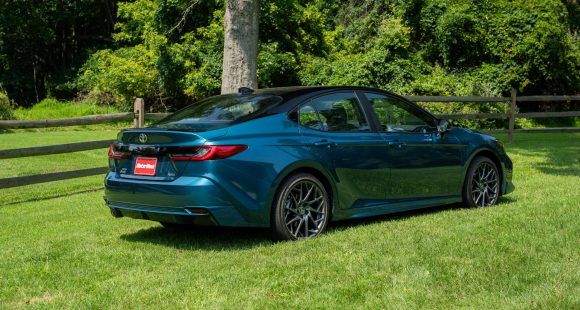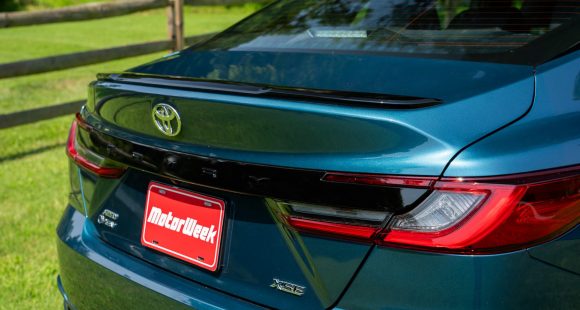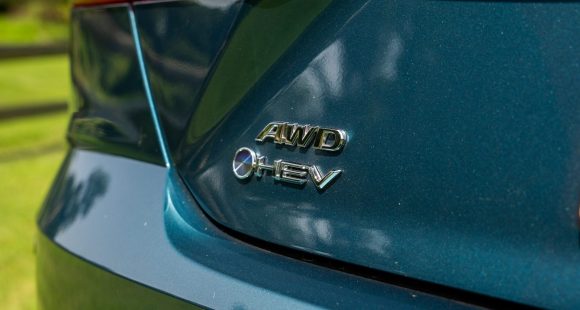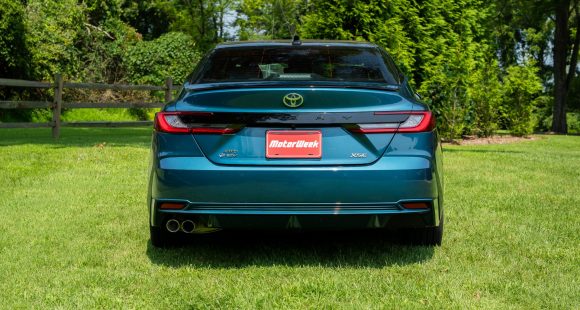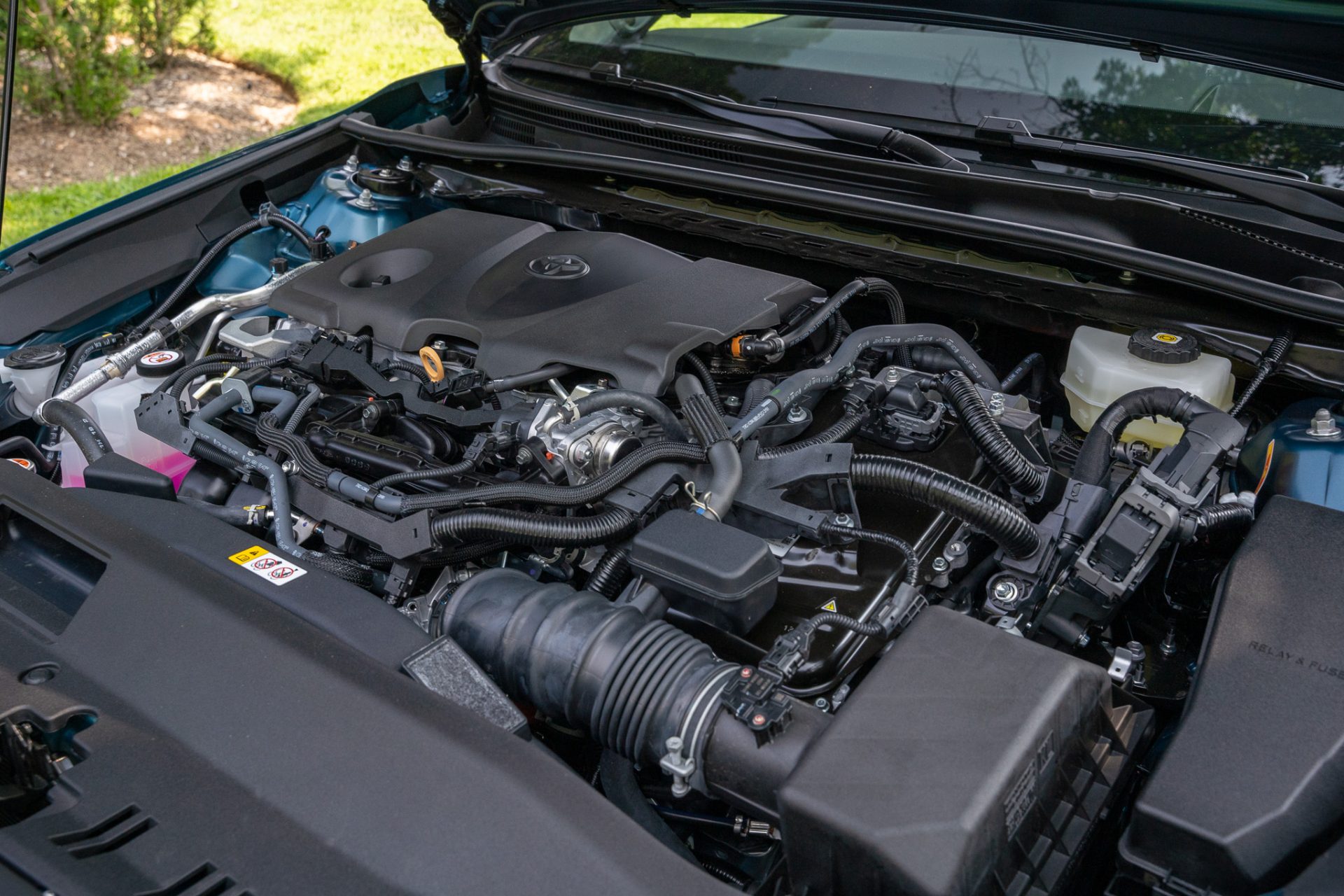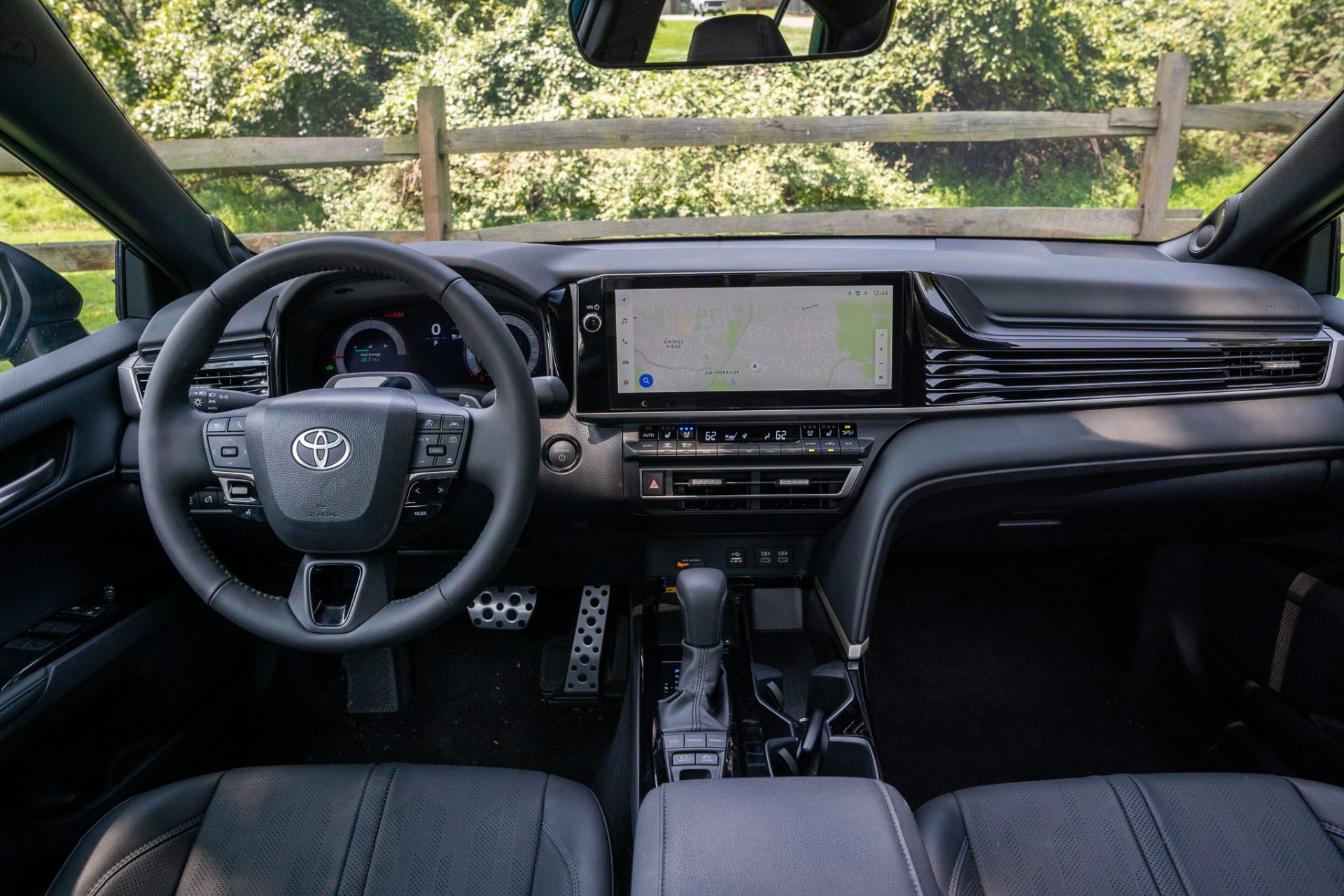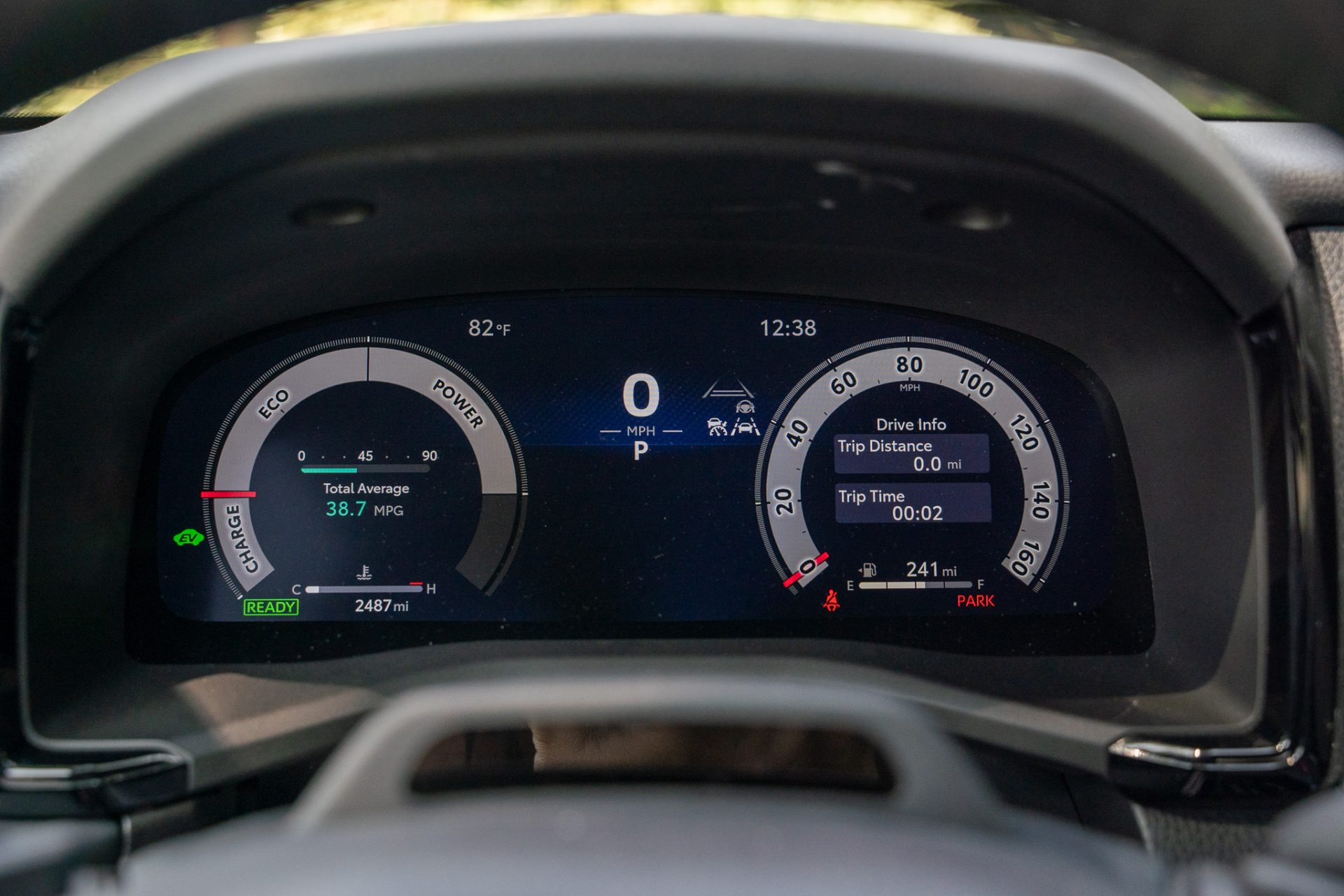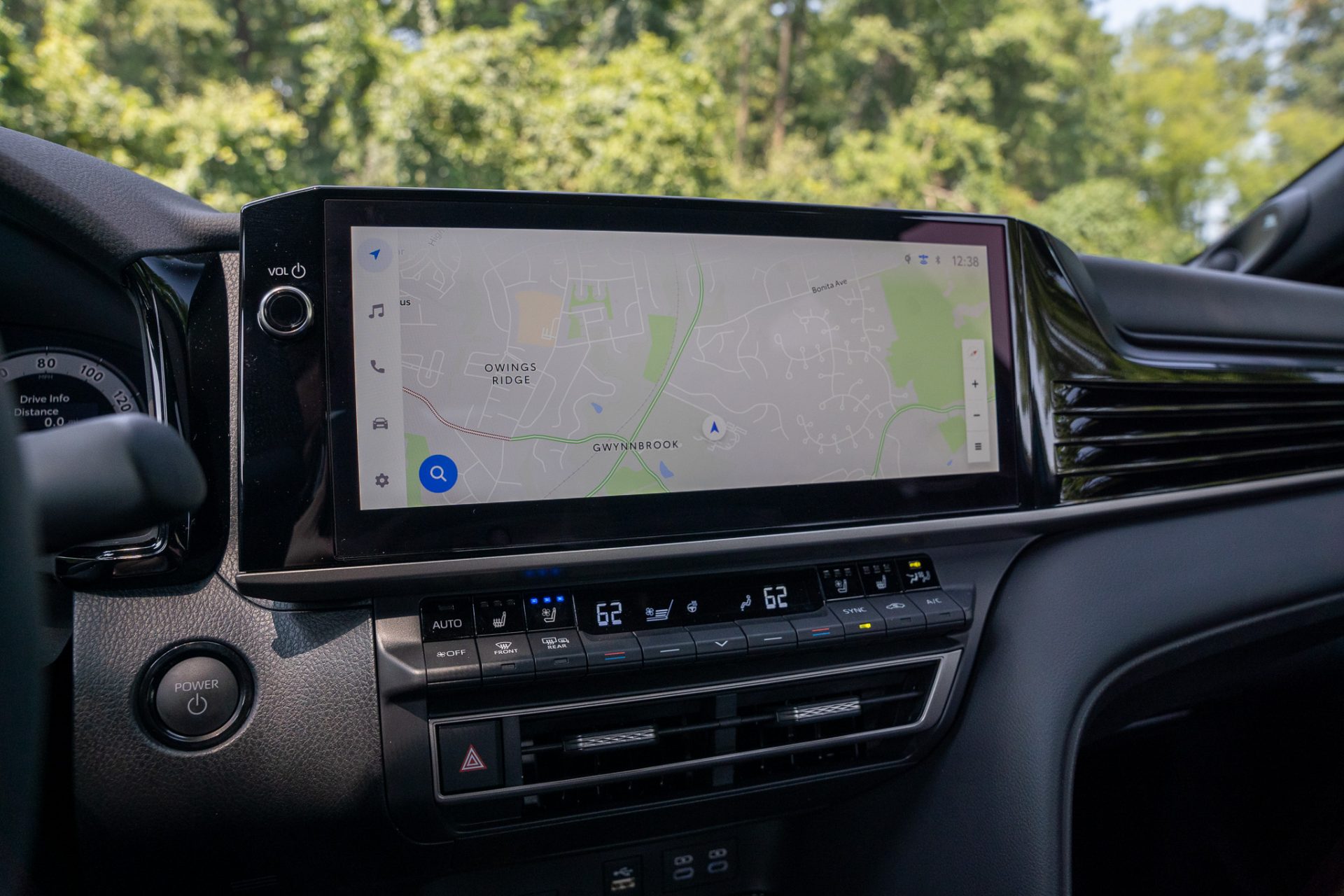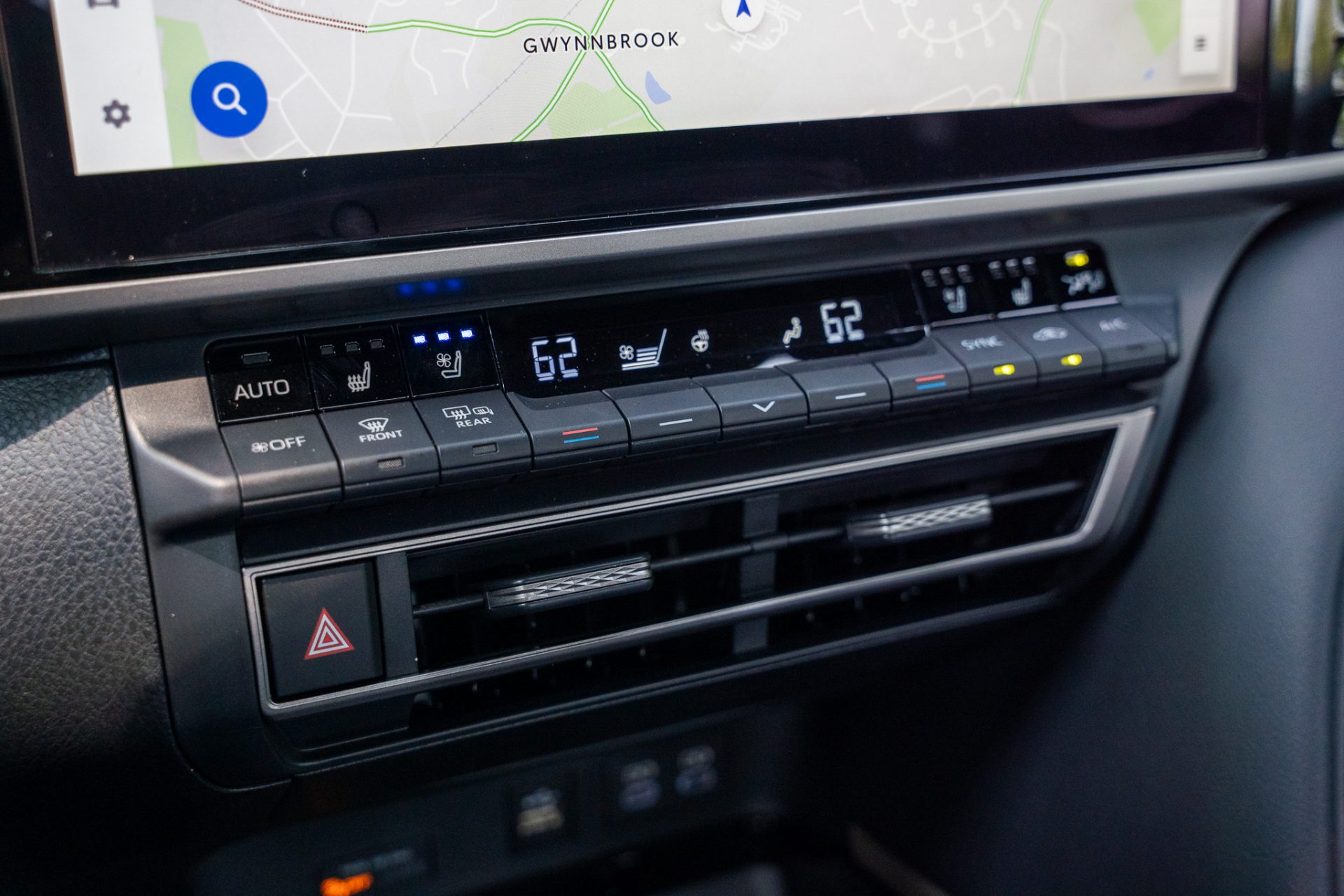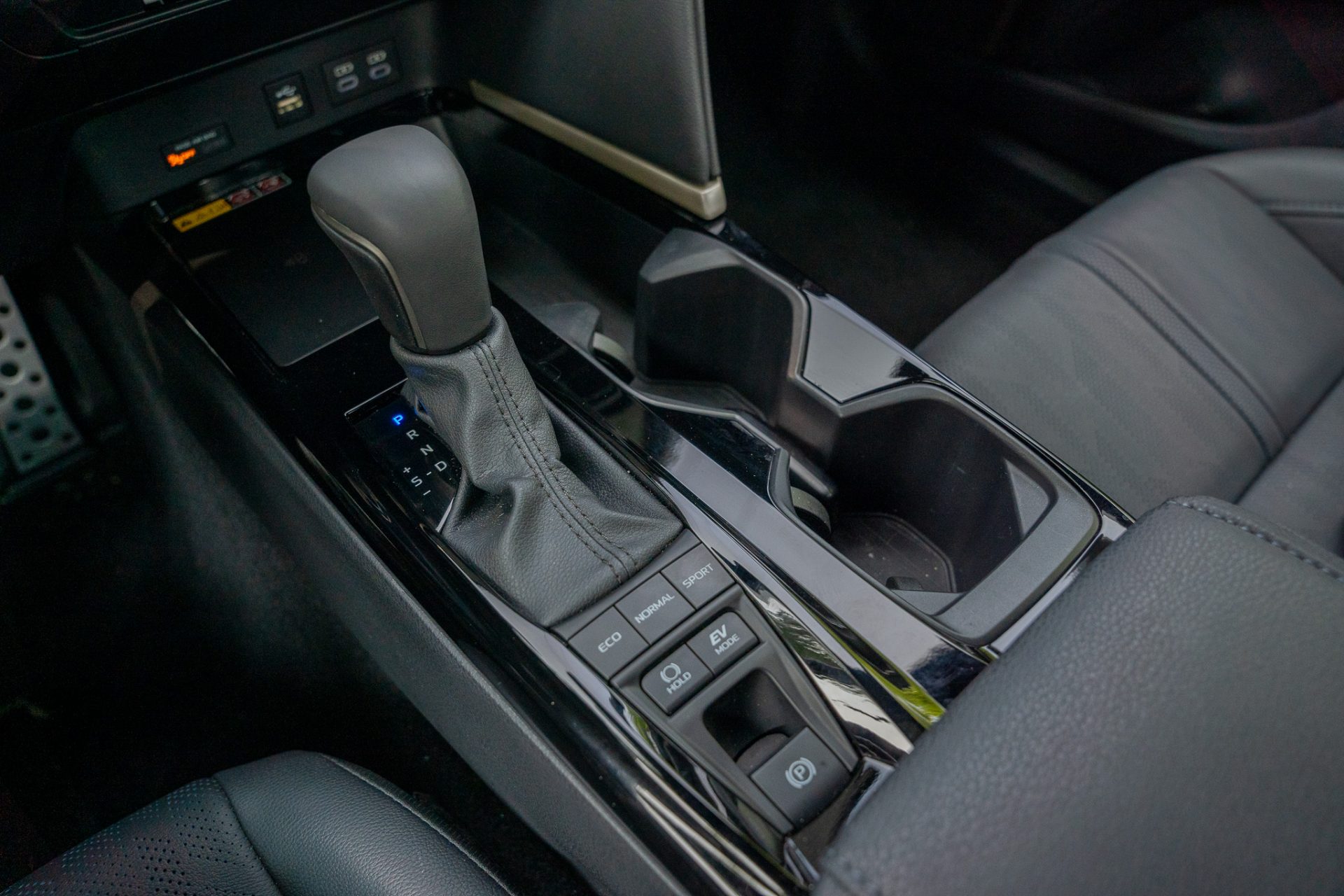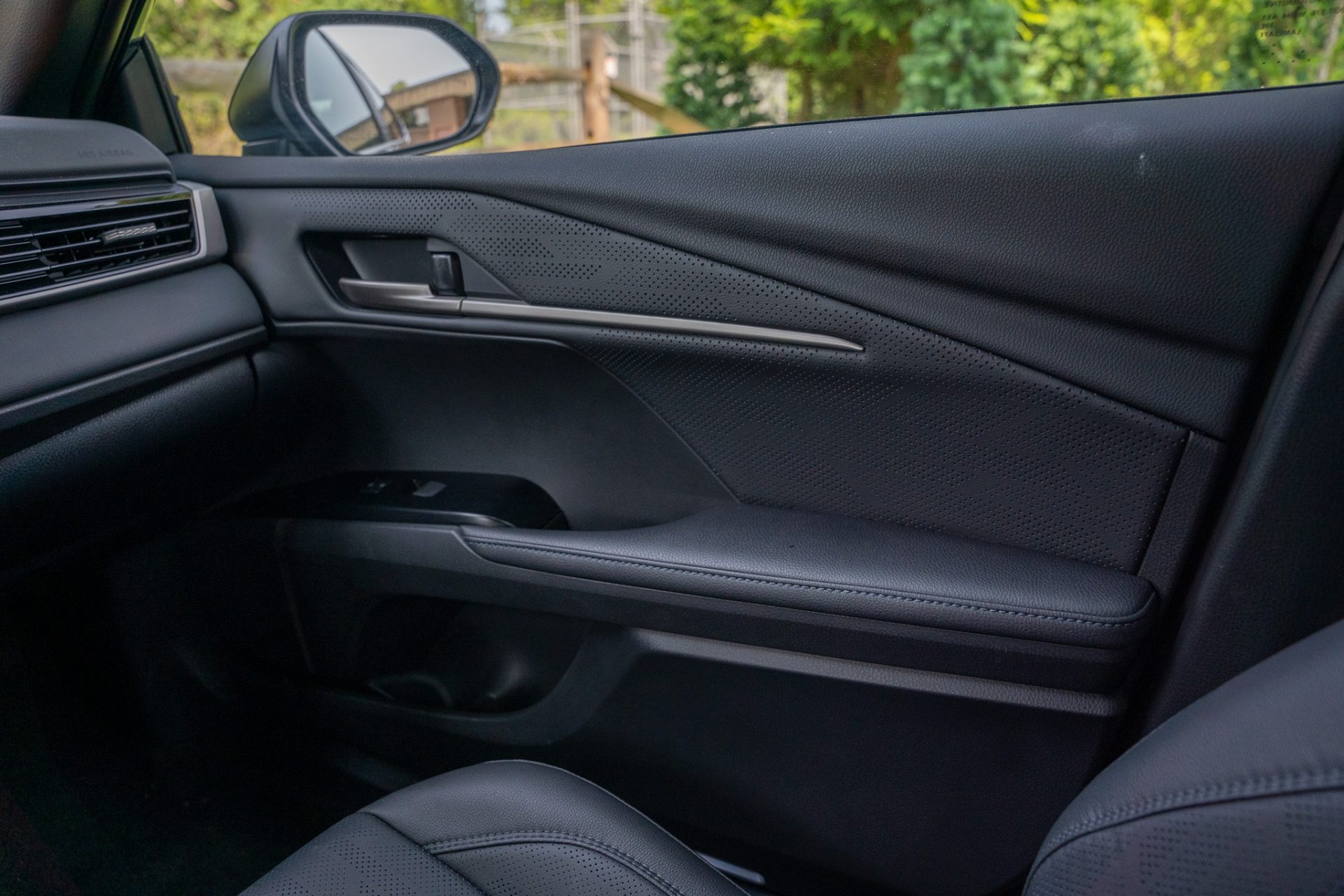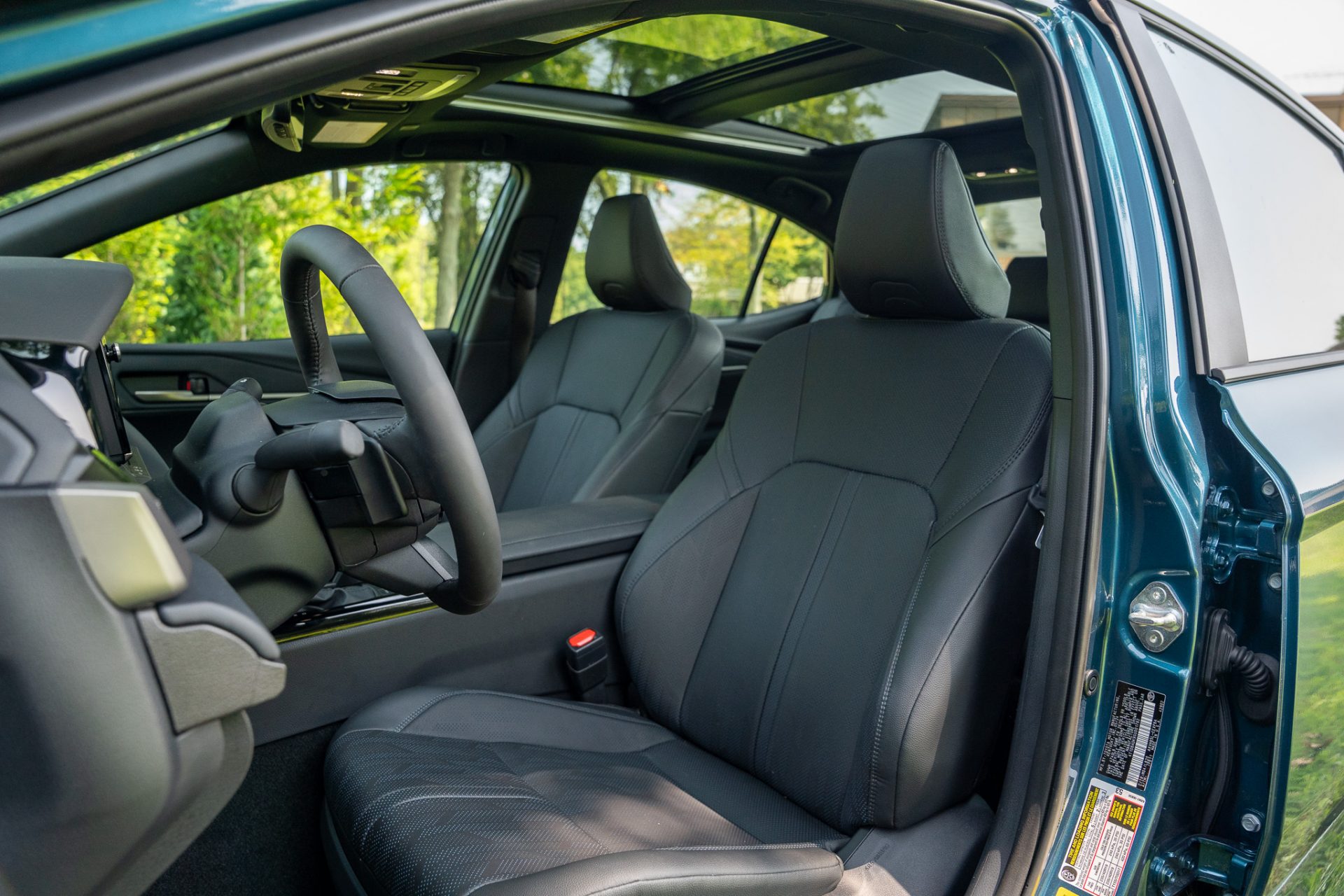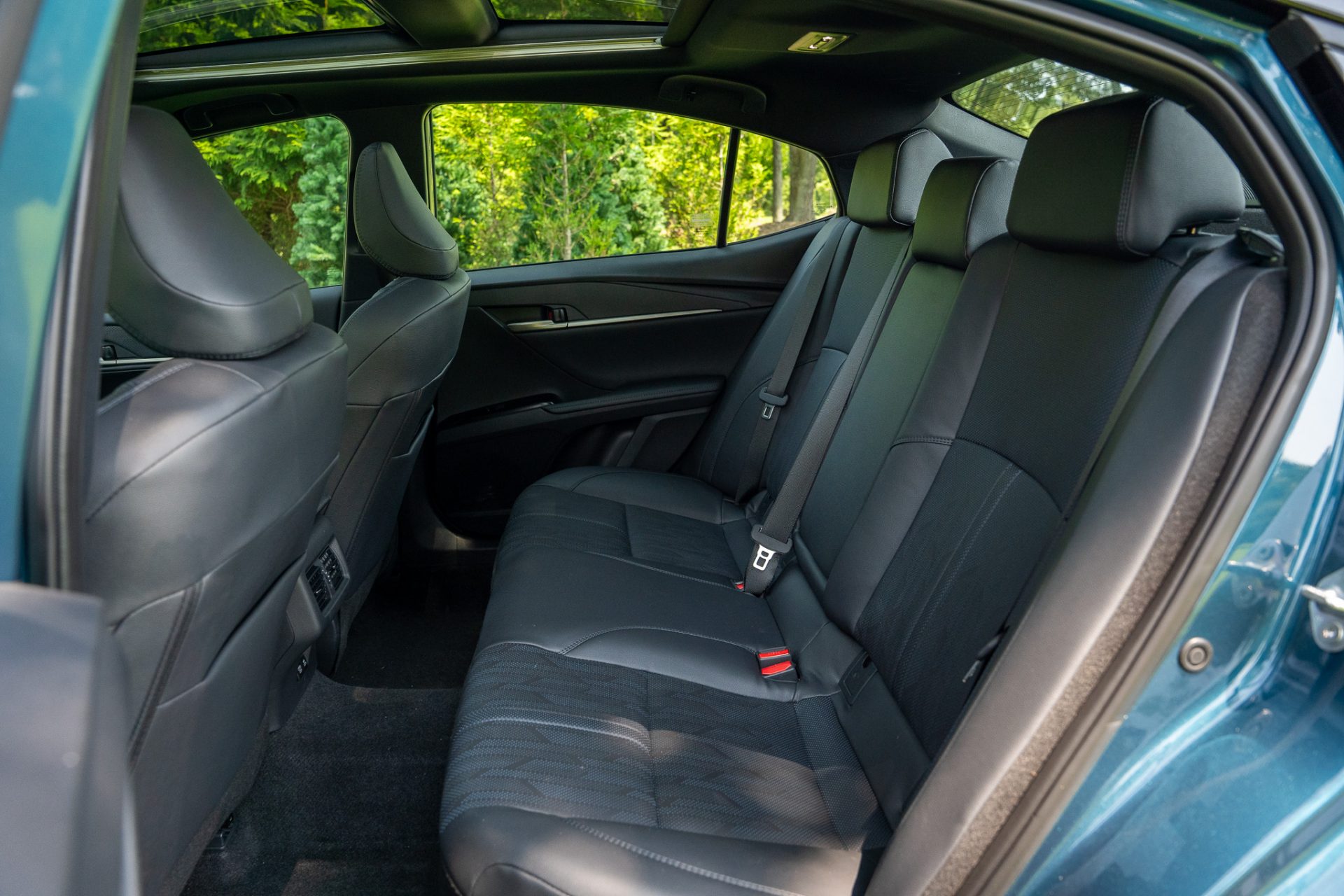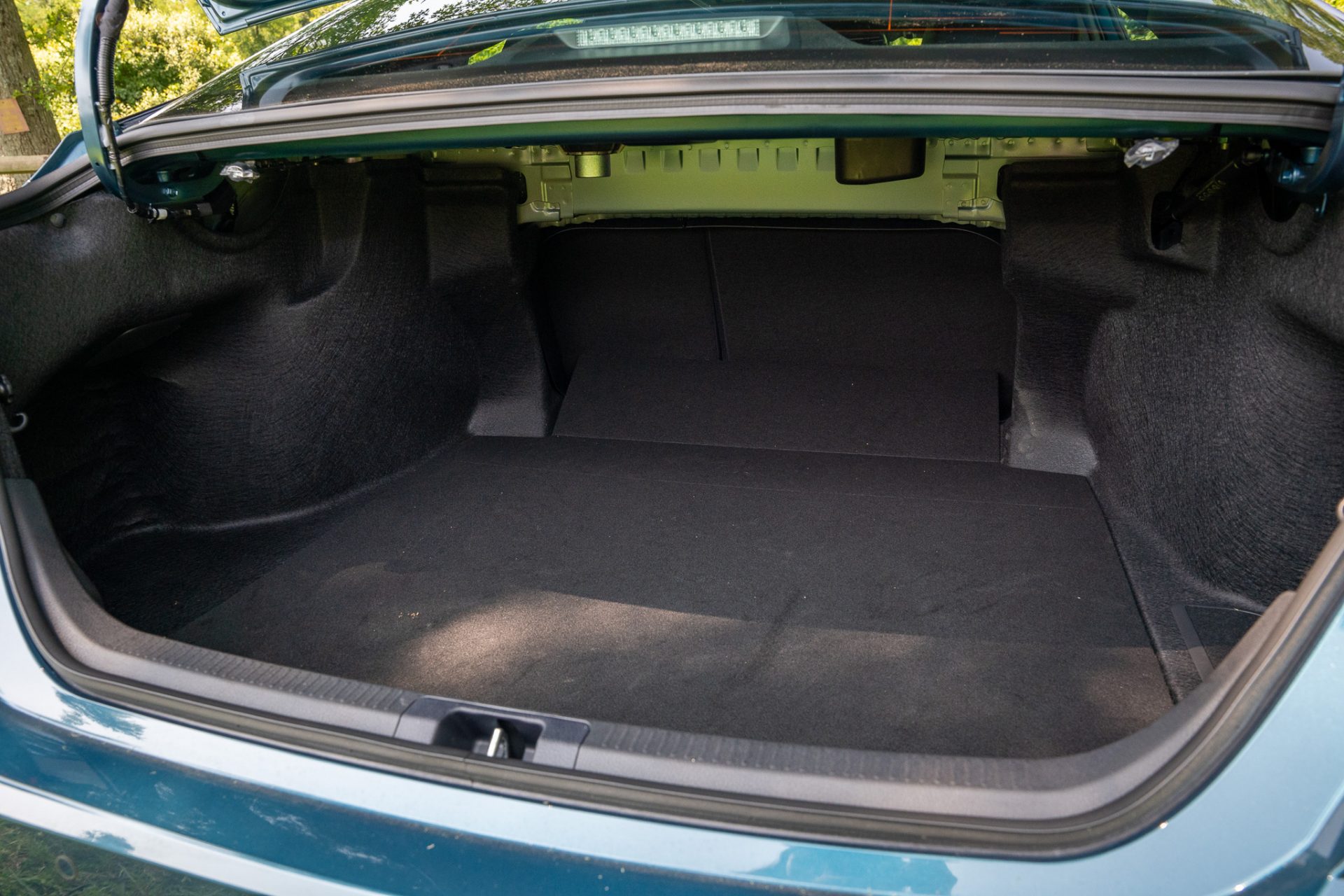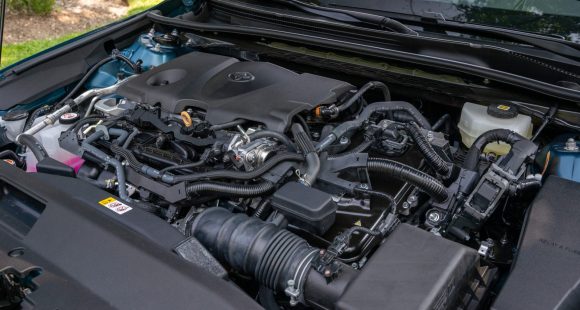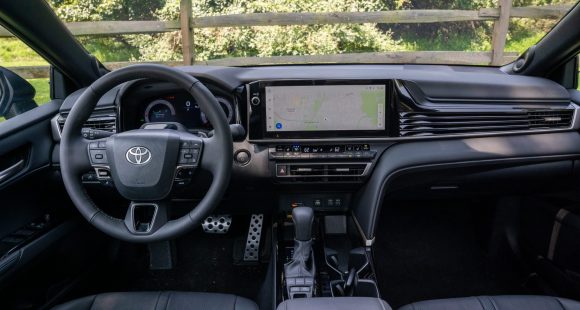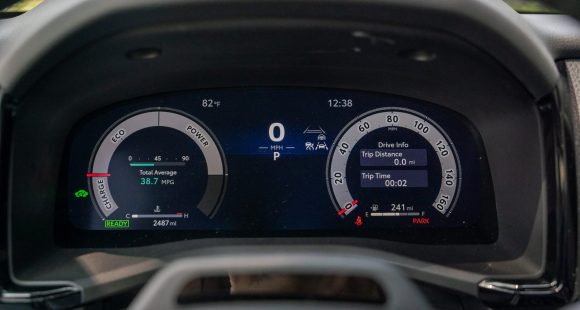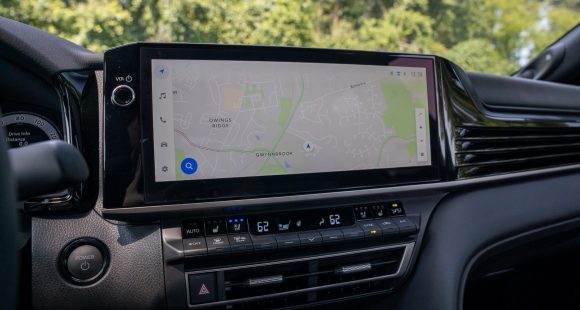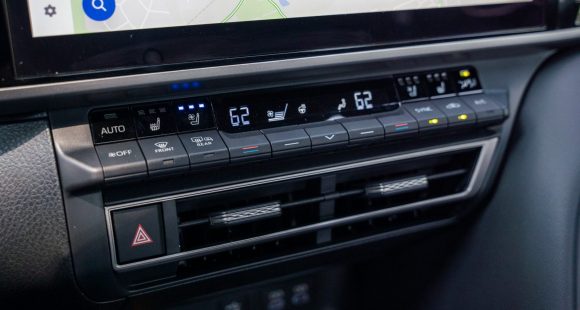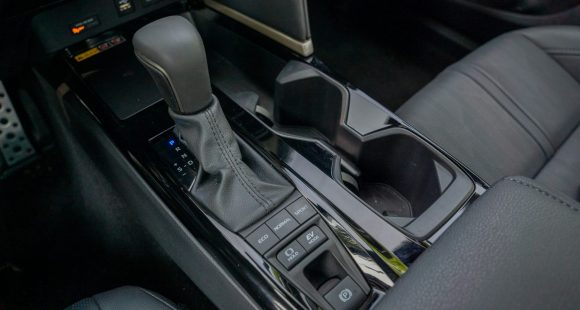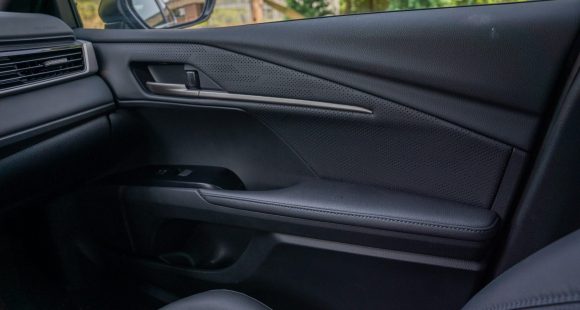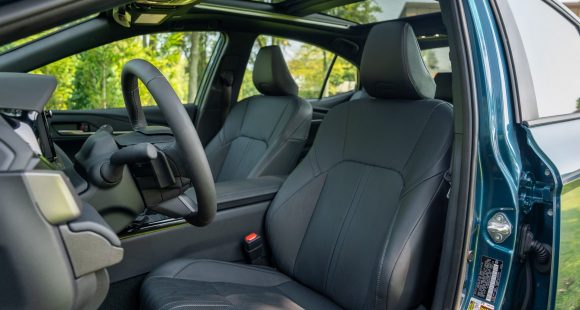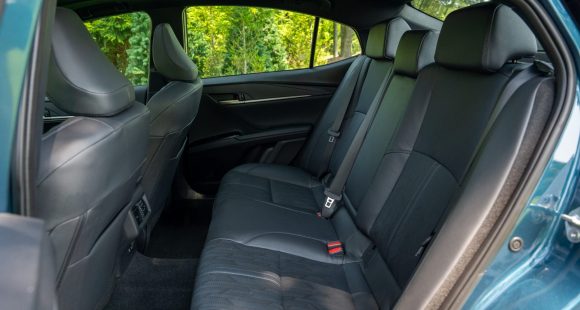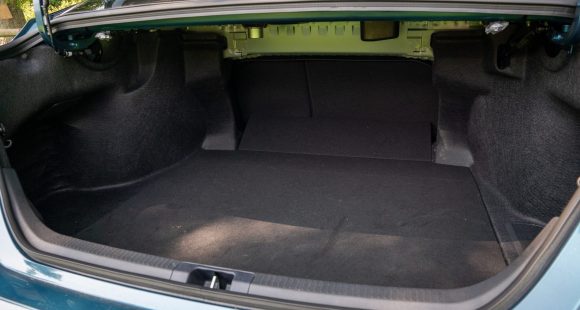2010 Porsche Panamera
It seems like the rumors of a four-door Porsche car have been dribbling out of Stuttgart for almost as long as MotorWeek‘s been on the air. Certainly, over the last three years, we’ve been fixated on every hint about the first sedan to wear the Porsche name in the firm’s 78-year history. Well, Porsche’s new flagship is no longer a rumor. This is the Panamera fastback sedan. Longer than a Cayenne SUV, it’s also the biggest Porsche ever. So, can any car this large perform like a true Porsche? Well, now’s our time to find out.
The 2010 Porsche Panamera takes its name from the legendary Carrera Panamericana race of the 1950s. While Porsche calls its first Gran Turismo a 4-door sedan, it actually has a rear hatch that makes five. But that’s only part of why Panamera’s styling is polarizing. While unmistakably Porsche, it’s on the conservative side, which should fit well-heeled sedan buyers. Frankly it also reminds us of a C6 Corvette-at the headlights, hood bulge, and even the side scoops.
With its long 115-inch wheelbase, and 195.6-inch overall length, the profile does start off coupe-like. But it becomes more tear drop towards the rear to allow for adult-sized backseat leg and headroom, something the rival Mercedes-Benz CLS lacks. The back view is wide, as if through a fish-eye lens. The hatch is well concealed, as is the retractable spoiler, with uniquely styled quad exhausts. Wheels are 18-inch standard, with optional 19’s.
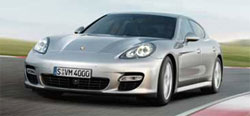 The Panamera is also the first front-engine Porsche car since the 928, driven by a pair of direct-injected V8s from the Cayenne. Panamera S and 4S use the normally-aspirated 4.8-liter with 400 horsepower and 369 pound-feet of torque. The Panamera Turbo adds twin turbochargers for 500 horses and a massive 516 pound-feet of torque.
The Panamera is also the first front-engine Porsche car since the 928, driven by a pair of direct-injected V8s from the Cayenne. Panamera S and 4S use the normally-aspirated 4.8-liter with 400 horsepower and 369 pound-feet of torque. The Panamera Turbo adds twin turbochargers for 500 horses and a massive 516 pound-feet of torque.
Gear change is Porsche’s latest 7-speed dual-clutch PDK automatic with manual paddle-shift mode. It feeds either the rear wheels of the Panamera S or all four wheels of the 4S and Turbo models. At our track, our Panamera 4S blazed from 0 to 60 in 4.9 seconds, and shot through the quarter mile in 13.5 seconds at 105 miles per hour. With Launch Control on, our car leapt out of the hole with a beastly roar. The PDK gearbox isn’t as quick as in the 911, but it’s smoother.
The Panamera’s chassis is defined by a front double-wishbone and a rear multi-link setup, all governed by Porsche’s Active Suspension Management. The adjustable dampers can be set to Normal, Sport, and suspension-lowering Sport Plus. In Sport Plus, we sliced through the cones in a razor-sharp manner. Steering response is perfect. The Panamera is a big, 4100-pound car. But that size seems to disappear the harder you push it. Our 4S also benefitted from optional Porsche Dynamic Chassis Control with its two active roll bars. Even at ridiculous speeds, cornering is flat.
Superb stopping power comes from four-wheel vented discs armed with six-piston calipers up front and four-piston in the rear. Stops averaged a very short 116 feet from 60 to zero. The Panamera just squats to a stop.
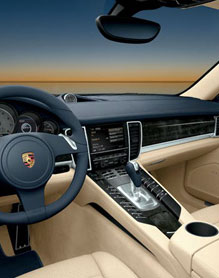 While the Panamera’s exterior may be controversial, the interior is a feast for the eyes. Beautifully trimmed in wood and even carbon fiber, there’s plenty of space for its four adult-wide seats. Your focus is drawn to two areas: the cascading 5-bezel gauge cluster, and a center console master control panel. There’s a lot of switches here, but they’re logically grouped. Navigation data is viewed on a large center stacked screen, and inside one of the gauges. Optional is a 17-speaker, 1000-watt Burmester stereo.
While the Panamera’s exterior may be controversial, the interior is a feast for the eyes. Beautifully trimmed in wood and even carbon fiber, there’s plenty of space for its four adult-wide seats. Your focus is drawn to two areas: the cascading 5-bezel gauge cluster, and a center console master control panel. There’s a lot of switches here, but they’re logically grouped. Navigation data is viewed on a large center stacked screen, and inside one of the gauges. Optional is a 17-speaker, 1000-watt Burmester stereo.
Rear vision is mostly blind spots, so both the available camera and front-rear parking sensors are recommended. The rear seats require little contortion to get to, and as we mentioned before, adults will find a generous space with headroom boosted further by a scalloped headliner. Amenities include adjustable vents, armrest with cup holders, and an available twin screen DVD system. Impressively practical, drop the 40/20/40 rear seats to expand luggage space from 15.7 cubic feet to a crossover-like 44.6.
Government Fuel Economy ratings for the 4S are 16 City/24 Highway on premium gas. We managed only 16.7 in mixed driving. The Panamera uses a mild hybrid-like start/stop system to shut down the engine at traffic lights.
Panamera pricing starts at $90,750 for the S, $94,750 for the 4S, and $133,550 for the Turbo. There’s no gas guzzler tax. That’s a notch above an S-Class, but comparable to an Audi S8. Naysayers can have a seat, because Porsche has done it. The 2010 Panamera is a primo luxury sedan and sports-car-for-four all rolled into one. Styling aside, this unique saloon delivers everything it promises, plus a lot more.
Specifications
- Engine: 4.8-Liter
- Horsepower: 400
- Torque: 369 Lb Feet
- 0-60 MPH: 4.9 Seconds
- 1/4 Mile: 13.5 Seconds @ 105 MPH
- 60-0 MPH: 116 Feet
- EPA: 16 MPG City/ 24 MPG Highway
- Mixed Loop: 16.7 MPG
2025 Toyota Camry
Camry Goes All Hybrid, But It’s No Prius Sedan
Whether you call it Camry or Cam-ray, you have to call this Toyota the best-selling sedan in the U.S. for 2023. Not bad for a car in the last year of its lifecycle. That’s right, the Camry is all-new for model year 2025. So, let’s find out if this ninth-generation Camry can stay truly competitive in this world of SUVs and crossovers.
There have been many variations of the Toyota Camry over the last 40 years; some more exciting than others, but all have been incredibly comfortable, efficient, and practical. That theme carries over for the all-new 2025 Toyota Camry.
Though it feels like they purposely avoided any type of “wow” factor inside. Sure, there are the expected big screens for multimedia and gauge display, but they kept them separated, keeping the overall vibe traditional and classy rather than flashy. They’ve also retained lots of physical controls, added some unique materials, and attempted to open up the space a bit, knowing that they’re going up against EVs these days too, not just usual family sedan nameplates.
The new Camry follows Toyota protocol of basic LE series and more sport-oriented SE series; adding an X in front of either adds a bit more content. For our XSE tester that mostly means a flashier exterior that includes black trim and rear spoiler, dual exhaust tips, and 19-inch wheels, but it also gets a sport-tuned suspension.
Following the pattern of many recent Toyotas, Camry now has an all-hybrid lineup. Toyota’s newest, fifth-generation hybrid system mates to a 2.5-liter I4 engine for the first time. It works with two electric motors for a 225-horsepower output, 17 more than the outgoing Camry hybrid. And it delivers up to 51 mpg Combined. All-wheel-drive versions add an additional electric motor in back for powering the rear wheels for an increased total output of 232 horsepower; and AWD is available for all trims.
This is easily the best handling Camry we’ve driven.
Our all-wheel-drive tester did feel quite peppy on the street, with a competent suspension that soaked up bumps easily without feeling soft or floaty. At the test track, there was great grip off the line, and a substantial punch of power to get us to 60 in 6.9 seconds. There was a nice little engine growl at takeoff too, but it quickly turned into a consistent droning noise due to the electronically controlled CVT trans. There are some simulated gears you can play with, but they don’t really add much to the performance; our best quarter-mile time was 15.2 seconds at 94 mph.
This is one case where “sport-tuned suspension” seems to really mean something, as this is easily the best handling Camry we’ve driven. Minimal body roll, great road feel, and steering that was both tight and responsive. All-wheel-drive grip was great through the cones, but most people will find it much more beneficial when driving on slippery roads.
The hybrid’s regen braking is not the most natural feeling, but in panic stops the brakes clamp down quickly, causing some aggressive nosedive, but ultimately resulting in very short, 110-foot stops from 60.
As mentioned earlier, Government Fuel Economy Ratings are as high as 51 Combined, but all-wheel-drive XSEs come in at 44 City, 43 Highway, and 44 Combined, though our lead foot test loop saw just, but still noteworthy, 42.6 mpg of Regular.
Pricing starts with the base LE at $29,535; all-wheel drive is another $1,525 if you want it. XSE tops out the range at $35,735.
While the midsize four-door sedan is not the suburban staple that it once was, the Camry absolutely remains a staple of the Toyota lineup, and even kept its status as America’s best-selling car last year. So, it looks like there’s no stopping the Camry, as the more efficient 2025 Toyota Camry is better-looking, has better performance, and is a better all-around family car than ever.
Specifications
As Tested
- Engine: 2.5-liter I4
- Transmission: e-CVT
- Horsepower: 232
- EPA: 44 City | 43 Highway | 44 Combined
- 0-60 mph: 6.9 seconds
- 1/4 Mile: 15.2 seconds at 94 mph
- Braking, 60-0 (avg): 110 feet
- MW Fuel Economy: 42.6 mpg (Regular)







